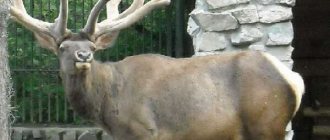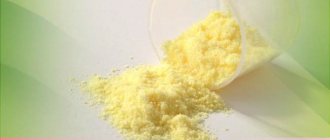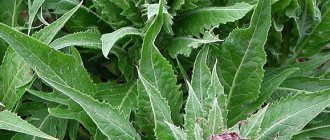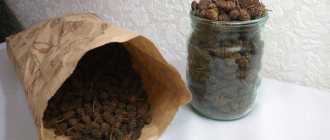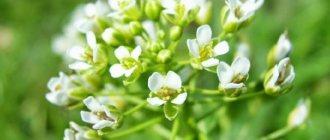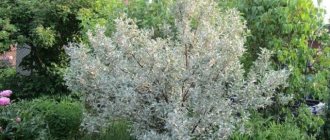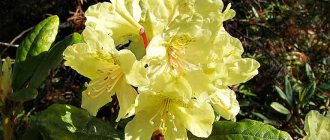Description of the alder tree and where it grows
Alder is a deciduous tree or shrub from the Birch family, reaching 5 m in height. It has smooth grayish bark, alternate rounded or ovate leaves with teeth along the edge. In March and April, the plant bears inflorescences - long staminate in the form of earrings and short oval pistillate ones. In September and October, the female flowers grow, become woody and form infructescences, or cones, that can remain on the branches all winter.
The alder plant is represented by several dozen species
Alder can be seen everywhere in the temperate climate of the Northern Hemisphere. Some species grow in Asia and Northern Vietnam, South America. Most often, the tree is found in damp places, near reservoirs, on river banks, in mixed and coniferous forests.
Important! The plant not only takes root well in any soil, but also improves its composition by releasing substances into the soil that suppress pathogenic organisms.
Chemical composition
The buds, pollen, bark and cones of the plant contain a huge amount of useful substances. Alder contains:
- essential oils;
- tannins and organic acids;
- flavone glycosides;
- tannins;
- alkaloids;
- taraxerol and triterpenoids;
- caffeic and protocatechinic acids;
- alnuline;
- fatty oils and steroids.
When used according to recipes, the alder plant has a very beneficial effect on the body and helps with many diseases.
What are the benefits of alder for human health?
Preparations based on plant raw materials obtained from alder are used:
- to normalize digestion and metabolism;
- to eliminate bleeding and heal wounds;
- as a diaphoretic;
- for blood purification;
- for pain relief purposes;
- to eliminate diarrhea;
- for inflammation and bacterial processes;
- for colds;
- to fight skin fungi;
- in the treatment of hemorrhoids, constipation, dysentery;
- for gastritis, colitis and stomach ulcers.
The properties of alder are used in medicine for joint ailments, skin irritations and allergies. The plant is also used in cosmetology; products based on it help reduce oily hair and get rid of dandruff.
Medicinal properties of catkins, buds, alder pollen
Tree catkins and short female buds of the plant are especially highly valued in folk medicine. Infusions and decoctions are prepared from them, which help with enteritis and colitis, bloating and pain. The medicinal properties of alder inflorescences can be used to create diaphoretics.
We recommend reading: Tea with thyme: beneficial properties and contraindications
The tree's pollen has valuable honey-bearing qualities. In folk medicine, it is used for colds, rheumatism and gout, for disorders of the intestinal microflora and food poisoning.
Alder buds and catkins are added to baths for dermatitis, frostbite and skin ulcers.
Tree cones are also a valuable natural product. They contain a lot of tannins, so the raw materials of the plant are used to stop bleeding and in the treatment of inflammatory diseases.
Medicinal properties of alder bark and wood
In folk medicine, the properties and benefits of black alder wood and the gray variety are used. The bark and young twigs are suitable for the treatment of digestive, colds and gynecological inflammatory diseases. Usually, strong tinctures or decoctions are prepared from the woody parts of the plant, in which the maximum amount of valuable tannins is preserved.
The woody parts of alder are suitable for mouth rinsing for gum inflammation.
Beneficial properties of alder leaves
Tinctures and decoctions based on the leaves have a laxative effect; medicines can be used for chronic constipation. Also, alder plates are good at reducing fever during colds.
Infusions of alder leaves can be added to foot baths to relieve fatigue and heaviness.
The benefits of an alder broom for a bath
Healing brooms for baths are made from thin tree branches. First of all, such fagots perfectly massage the body due to the abundant leaves. In addition, in a steam room, under the influence of humidity and high temperature, alder releases beneficial bactericidal substances and essential oils. You can use a broom for respiratory diseases, skin ailments and inflammation of the joints. In the bath, alder will be beneficial for oily skin, acne and ulcers, and excessive sweating.
Methods of preparation and use
Traditional medicine offers several options for processing alder fruits, buds and other parts. Any means have a good healing effect.
Tincture
The recipe for making the tincture is as follows:
- 100 g of tree fruits are poured into a glass container;
- pour 500 ml of alcohol or high-quality vodka;
- close the bottle and send it to a dark place for two weeks.
After the expiration date, the tincture is filtered to remove sediment. You need to take the product 25-40 drops, depending on the disease, three times a day. Alder tincture has a good effect on colds and inflammatory ailments, and intestinal disorders.
Alder tincture is suitable for rubbing sore joints
Infusion
To prepare a water infusion, alder buds and catkins are used. The recipe looks like this:
- two large spoons of raw material are ground into small crumbs;
- pour a glass of hot water;
- kept closed for half an hour;
- filtered.
The strained alder infusion is taken in a large spoon three times a day on a full stomach.
Drinking alder infusion is useful for abdominal discomfort, bloating and digestive disorders.
Decoction
Alder bark is beneficial for diarrhea due to its high content of tannins. The medicine is prepared as follows:
- two large spoons of bark are crushed;
- pour 300 ml of boiling water;
- keep in a water bath for about 20 minutes;
- remove from the stove and leave for another four hours in a warm place.
You need to consume alder decoction three times a day, only 10 ml on an empty stomach.
Alder decoction can be used externally for cuts, burns and dermatitis
Traditional medicine recipes
Photo: Yandex.Pictures
Gray alder is one of the best and most affordable remedies for the treatment of gastrointestinal disorders.
Treatment of suppurations and skin ulcers
- Grind fresh alder leaves in water. The resulting mass helps with suppuration and severe ulcers.
Decoction for the treatment of inflammation of the gastrointestinal tract
- Pour four grams of cones into a glass of boiling water. Put on fire and boil for 15 minutes. Take 1/4 cup 3-4 times a day before meals. For chronic colitis, after 1–2 days of taking the decoction, an improvement in the condition is noted.
Astringent infusion for indigestion
Prepare an infusion: place two tablespoons of fruits in an enamel bowl and pour a glass of hot water. Close the lid and heat in a water bath for 15 minutes. Cool at room temperature for 45 minutes, strain.
Squeeze out the cooled raw materials, bring the volume of the resulting infusion with boiled water to 200 ml. Store the infusion in a cool place for no more than 2 days. Take 1/2–1/3 glass 2–3 times a day 30 minutes before meals as an astringent.
Treatment of articular rheumatism
- Pour one tablespoon of pine cones into a glass of boiling water. Wrap and leave for 2 hours, strain. Take one tablespoon 3-4 times a day.
Alder fruit infusion
Alder fruits help with any acute and chronic digestive disorders. Their infusion quickly stops diarrhea, eliminates bloating and abdominal pain, and improves the general condition of the body.
- Pour two tablespoons of fruits with a glass of boiling water and leave until completely cool. Take 1/4 cup 3-4 times a day before meals.
Alcohol tincture for stomach and duodenal ulcers
- Take one part of the fruit and pour five parts of vodka. Leave for 2 weeks. Take 1/2 teaspoon up to four times daily.
For halitosis
- Prepare a decoction: pour 20 grams of chopped leaves into 1/2 liter of water. Put on fire and cook for 20 minutes. Strain, cool. Rinse your mouth if you have bad breath.
Infusion for bleeding
- For various types of bleeding, you should take an infusion of a handful of alder leaves orally. Pour a handful of leaves into a glass of boiling water. Let it brew; the infusion can be sweetened with honey or sugar. Drink small cups throughout the day.
Use in folk medicine
Most often, the medicinal properties of alder are used to treat digestive disorders. When used as a prescription, the plant helps to get rid of stomach discomfort and improve metabolic processes.
For heaviness and pain in the abdomen
For pain in the epigastric region, an infusion of alder buds and inflorescences helps well. They do it like this:
- 5 g of plant raw material is poured into 200 ml of hot water;
- cover the container with a lid;
- kept at room temperature for three hours.
The strained alder infusion should be drunk 50 ml four times a day until the condition improves.
For diarrhea and dysentery
A decoction of alder bark or buds helps to cope with indigestion. Do it as follows:
- 100 g of alder raw material is poured into 500 ml of hot water;
- simmer over low heat for 15 minutes;
- Cool in a warm place for another three hours.
Then the product must be passed through cheesecloth for filtration. Drink 100 ml of alder decoction twice a day; it can also be used for colds, polyarthritis and malaria.
For chronic colitis
For intestinal colitis, an alcohol tincture of the plant is beneficial. They do it like this:
- 100 g of inflorescences and cones are poured with 500 ml of vodka or alcohol;
- put it in a dark place for five days, not forgetting to shake the vessel daily;
- pass the tincture through folded cheesecloth to filter.
Take the medicine 25 drops three times a day, first dilute the medicine in a small amount of water.
Attention! Before using alder tincture for colitis, it is recommended to consult a doctor. It is strictly forbidden to exceed the indicated dosages of the home remedy.
You should take alder tincture for gastritis and colitis outside the period of exacerbation
For thrombophlebitis
For varicose veins and a tendency to form blood clots, a combined infusion using alder fruits is beneficial. It is made according to this recipe:
- alder raw materials are mixed in equal parts with plantain, celandine, string and fir;
- add the same amount of willow bark, lilac, woodruff, hen and mullein;
- measure out 10 g of medicinal collection;
- pour 200 ml of hot water;
- leave for three hours in a dark place.
The resulting drug is filtered and divided into three equal portions, and then consumed during the day each time after meals. You need to take alder infusion every day for two months, at the same time you can make lotions for problem areas with the same remedy.
For hemorrhoids
The healing properties of alder are beneficial for external hemorrhoids. It is recommended to take daily sitz baths based on inflorescences and buds. Prepare the following healing collection:
- 10 g of alder are mixed with an equal amount of sage, wheatgrass and oregano;
- add the same amount of podbel and linden;
- Brew a large spoonful of the collection with 1 liter of hot water;
- stand for about half an hour.
The strained product is poured into a large basin of hot water and the lower part of the body is lowered into it for 15 minutes. The procedure must be repeated in the evenings for a month to obtain a permanent effect.
Alder - medicinal properties, use in folk medicine.
The fact that alder has healing powers has been known since ancient times. Previously, this plant was considered sacred and magical. People revered this tree, bowed before it, asked for help and simply made requests. The Celts associated alder with the spring equinox, and in other cultures the tree was a symbol of rebirth and fertility. Many centuries ago, scientists were able to find out that this plant helps reduce the tissues of the human body. Alder was used as a blood purifying and hemostatic agent.
In the modern world, alder is no less revered. It is used to treat many ailments.
Description of the plant, collection of medicinal raw materials.
Alder is a low-growing shrubby plant of the Birch family, reaching a height of five meters or more. The plant has a smooth to the touch, ovoid grayish crown. The leaves of the bush are either round or ovate. The plant is equipped with oval and short flowers, collected in inflorescences - earrings. Alder fruits are oblong-shaped cones. The seeds are nuts.
Alder blooms in March-April, and the fruits ripen in September-October. In total there are more than 40 varieties of shrubs. The most common types: sticky and gray alder. This plant is considered a long-livers, since its lifespan reaches fifty years or more. Alder grows in damp places, along rivers and lakes.
Article on the topic: Delphinium reticularis - beneficial properties, description
The fruits, leaves, and bark of the plant are used to prepare medicines. It is recommended to collect fruits in late autumn. The fruits are black and oval in shape. They must be carefully cut using garden shears and dried in a warm room. Properly prepared raw materials will have a weak aroma, a somewhat astringent taste and a brownish or dark brown tint.
It is recommended to harvest alder leaves at the beginning of the summer, around June, and the bark at the beginning of the winter.
Alder - composition and medicinal properties.
This healing plant contains a considerable amount of nutrients and healing substances:
- essential oil;
- tannins;
- protocatechinic and caffeic acids;
- alkaloids;
- flavone glycosides;
- tannin;
- triterpenoids:
- alnulina;
- taraxerol;
- organic acids.
Preparations based on alder can provide:
- hemostatic;
- astringent;
- bactericidal;
- anti-inflammatory;
- pain reliever;
- diaphoretic;
- blood purifying effect.
Substances included in the plant contribute to:
- normalization of the functioning of the gastrointestinal tract;
- wound healing;
- elimination of nose and gum bleeding;
- reducing the tendency to allergies;
- death of protozoan microorganisms;
- cleansing the skin of microbes;
- treatment of colds, hemorrhoids, digestive disorders, skin diseases, scrofula, rheumatism, gastritis, colitis, gastroenteritis, constipation, stomach ulcers, dysentery.
In addition, alder has also proven itself in cosmetology. Their plants are used to rinse hair with decoctions. Alder cosmetics help get rid of oily seborrhea.
Alder in traditional medicine recipes
The plant is used to prepare various decoctions, infusions, tinctures, and teas.
Preparation of infusion of cones. This medicine helps eliminate pain in the epigastric region. Take five grams of raw material and brew with 200 milliliters of boiled water. Leave the product for three hours. Filter and drink fifty milliliters of the medicine four times a day.
Preparation of a healing decoction from the bark of the plant. This remedy will cure any disturbances in the functioning of the gastrointestinal tract. Take two tablespoons of crushed alder bark and fill the raw material with 300 ml of water. Place the container on the stove and simmer over low heat for seven minutes. Leave the medicine to sit for four hours. Take ten grams of the drug three times a day.
Elimination of dysentery and diarrhea using alder decoction . Pour boiling water over the plant cones, then boil over low heat for fifteen minutes. Leave the product for three hours in a warm place. Filter and drink 100 milliliters twice a day. The same medicine will help cure colds, malaria, and polyarthritis.
Alder in the treatment of chronic colitis . Fill the plant buds with alcohol. Place the product in a dark, cool room for five days. Take twenty drops of tincture diluted with water three times a day.
Treatment of thrombophlebitis. Combine alder fruits with string, woodruff, celandine, willow bark, mullein, fir, lilac, podbel and plantain. Grind all the ingredients and brew ten grams of the plant mixture with 200 milliliters of boiled water. Place in a dark place for three hours. Divide the product into three doses and use throughout the day. The duration of the treatment course is two months. You can also use the infusion as a lotion.
Treatment of trophic ulcers. Mix alder fruits with nettle, dried grass, thyme, pepper knotweed, wormwood, watch, flax seeds, clover. Finely chop all the ingredients and mix well. Brew two tablespoons of raw material in 300 ml of boiled water and leave to infuse in a dark place for several hours. Make lotions. The duration of the course is thirty days.
Alder in the treatment of acute gastritis. Take alder cones, chamomile, eucalyptus, podbel, anise, finely chop and pour boiling water over the mixture. Let the product infuse for two hours. Drink 50 ml of infusion three times a day. The duration of treatment is a month.
Treatment of chronic gastritis. Mix alder leaves with rue, woodruff, centaury, tenacious, tartar, plantain, eucalyptus, chop all the plants and brew fifteen grams of plant material with half a liter of boiling water, leave in a dark place for three to four hours. Take half a glass of medicine three times a day. The treatment course is thirty days.
Elimination of a delicate problem - hemorrhoids. Combine alder leaves with thyme, celandine, agrimony, mint, St. John's wort, sweet clover, verbena, lingonberry leaves, mullein, calendula, dandelion roots and caraway fruits. Finely chop all the ingredients and brew three tablespoons of the mixture with boiled water. Let the product sit for a while. Drink a third of a glass four times a day. The duration of the treatment course is two months.
It is recommended to use the following sitz bath product for hemorrhoids. Brew ten grams of crushed plants: alder fruits, sage, wheat grass, linden flowers, oregano in a liter of boiled water. Carry out this procedure before going to bed. The treatment course is one month.
Article on the topic: Rutabaga - beneficial properties, description
Treatment of algodismenorrhea. Chop alder leaves, eucalyptus, violet, motherwort, fennel, and yarrow and brew in half a liter of boiling water. Leave the product to sit for four hours. Drink 100 ml of infusion four times a day. The duration of treatment is three months.
Preparation of healing ointment. Mix crushed cones with cinquefoil and aspen bark. Brew a couple of tablespoons of the mixture in 300 ml of boiling water, simmer over low heat for about twenty minutes. Add 50 ml of alcohol and four tablespoons of vegetable oil to the cooled, strained product. Mix well and place the mixture in a cool place for a week. Lubricate the affected areas with this ointment for burns and wounds that do not heal for a long time.
Contraindications!
It is not recommended to take alder preparations for pregnant women, small children and people with individual intolerance.
Application in cosmetology
Alder fruits are used in home cosmetology. Decoctions and infusions based on the plant promote hair growth and stop hair loss, reduce the oiliness of curls and eliminate dandruff. They can be used to care for irritated skin, to tighten pores and treat acne.
With increased greasiness of the epidermis and frequent rashes, the following remedy gives a good effect:
- a large spoonful of infructescences is crushed;
- pour 300 ml of boiling water over the plant material;
- keep covered for two hours and filter.
The infusion should be used for washing up to three times a day; the procedure should be repeated daily.
Alder inflorescences have a good effect on brittle hair that is prone to hair loss. For medicinal purposes, you should prepare a simple remedy:
- three large spoons of infructescences and buds of the plant are poured into a thermos;
- pour 500 ml of boiling water over the raw materials;
- insist for three hours;
- passed through folded gauze.
The healing infusion of alder should be rubbed into the root area daily shortly before bedtime. There is no need to remove the product after application. In total, the procedure is repeated for ten days, at the same time it is recommended to use the infusion for rinsing every time after regular shampooing.
Alder strengthens hair roots and regulates the production of subcutaneous sebum in the root zone
Procurement of raw materials
Alder fruits and bark can be collected from October to March. Dry the raw materials outdoors, in a ventilated area. You can also use not very hot ovens for drying. Dried fruit and bark should be stored in a cool, dry, dark place for up to four years.
Medicinal plants. Large illustrated encyclopedia This book is unique.
- This is also a guide to plants, both wild and cultivated, that can be used for medicinal purposes, as it contains their visual photographs and full characteristics.
- And a herbalist - thanks to a variety of recipes used for the most common diseases, with precise dosages and a detailed description of the preparation process.
- And a guide to collecting and preparing medicinal herbs.
- And even a guide to growing and caring for cultivated medicinal plants.
The author of this encyclopedia is T.A. Ilyina, a candidate of biological sciences, summarized her own experience and professional knowledge. Buy the electronic version Buy the paper version
Contraindications to the use of alder
The health benefits and harms of alder vary from person to person; the plant has certain contraindications. These include:
- pregnancy and lactation;
- children under 12 years of age;
- individual intolerance to plant materials;
- stomach ulcer and gastritis in the acute stage;
- pancreatitis in the acute phase.
Since the bark and cones of the plant have strengthening properties, it is not recommended to use them if you are prone to constipation. If you have frequent diarrhea, you should be careful when using the leaves. Also, during treatment with alder raw materials, you must carefully follow the dosages indicated in the recipes.
If the volume of medications is exceeded, side effects may develop - nausea, dizziness and migraine. In this case, the use of infusions and decoctions should be stopped immediately, and if symptoms persist, consult a doctor.
Collection and preparation
The timing of collecting raw materials varies depending on which parts of the alder are required for medicinal purposes. The plant's cones are harvested in late autumn or early winter; annual shoots about 1.5 cm long are cut with pruning shears. It is not recommended to touch ordinary young branches; flower buds are formed on them, which are yet to bloom in the spring.
Alder catkins and pollen are harvested in the spring during the flowering period. It is better to collect the leaves of the plant before the beginning of summer, when they contain a maximum of vitamins and organic acids. Alder bark is removed before the spring growing season or in the fall shortly before cold weather, when the tree is at rest and will not suffer from damage.
Plant materials can be used immediately after collection. But more often alder is dried for long-term storage. To do this, parts of the plant are laid out in a thin layer on a flat surface in a warm room or outdoors, away from direct sun, but with good ventilation. During drying, the raw materials are stirred from time to time. You can also use electric dryers or ovens to evaporate moisture, heating them to no more than 50 °C.
Not only alder buds need drying, but also already lignified cones.
Alder should be stored in paper bags, wooden boxes or fabric bags. The place is chosen dark, moderately warm and dry, without access to sunlight. The beneficial properties of the harvesting are retained for three years, and after that a new harvest of the plant is required.
Pests and diseases
- Like all living things, sticky alder is also capable of getting sick, and it also has its own parasites; Taphrina is one of these pests. It causes scales to appear on the female earrings, damaging them.
- Taphrina alni is another specimen from the same family, it forms what is popularly called “witch’s broom”, these are a number of clusters of small shoots that have sprouted from dormant infected buds. The leaves shrink and spots appear on them.
- The fungal parasite Taphrina sadebeckii that causes spots on the leaf surface. Leaves infected with Taphrina tosquinetii are severely affected. The foliage curls, crumples, becomes covered with a gray coating, and the shoots die.
- But not only foliage and flowers get sick, the roots also suffer from the infection. They develop cancerous tumors, and after some time, Alnus (alder) dies from the action of the parasite Plasmodiophora alnus.
Article on the topic: Johnson's grass - beneficial properties, description
